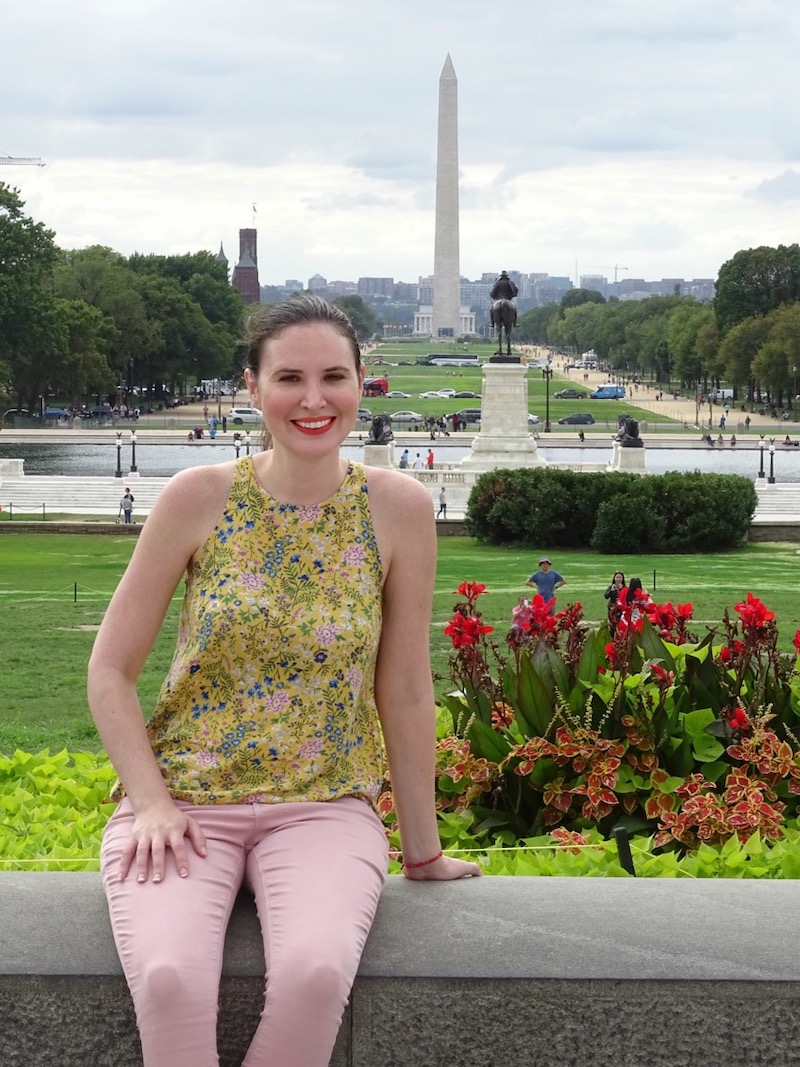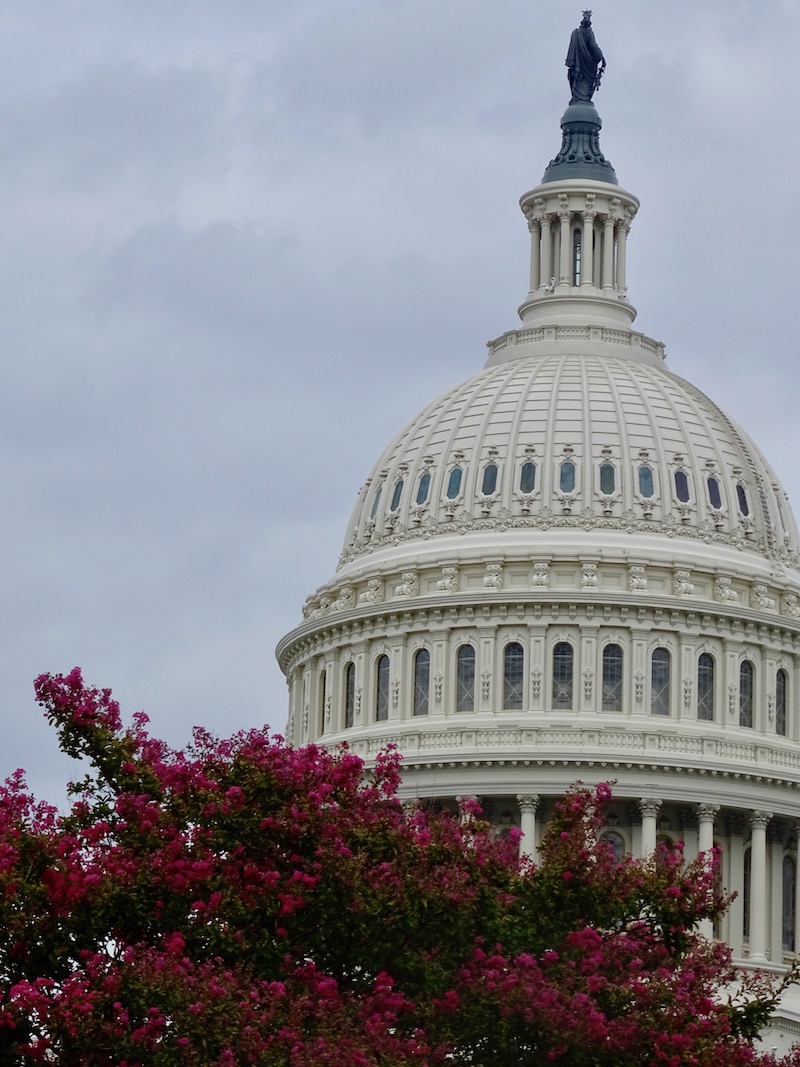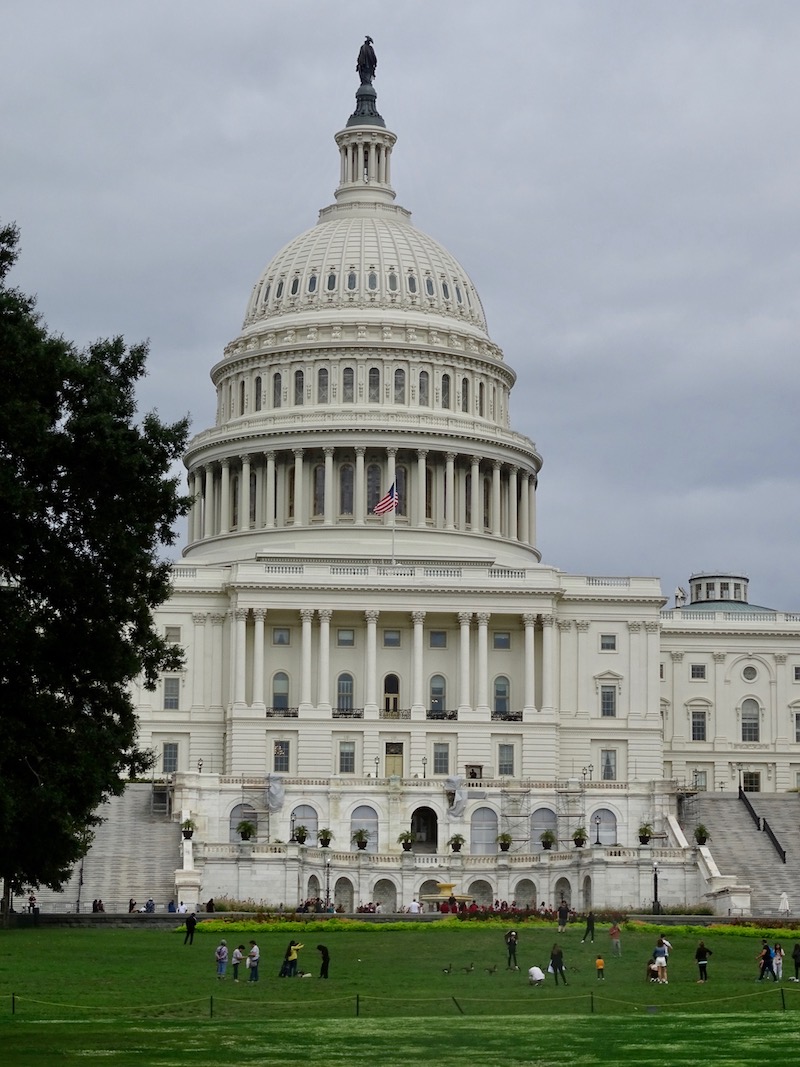Visiting the United States Botanic Garden is another one of the things you can do for free in Washington D.C. This is due to the fact that the capital of the United States has many attractions that are managed by the state or by non-profit organizations. On one of my many visits to Washington D.C. (my sister lives in this city) I decided to visit this garden located at 100 Maryland Ave SW in the National Mall.
Booking.comUnited States Botanic Garden
If you are tired of seeing lifeless museums, you can go to this museum of living plants. The national garden is open every day from 10 a.m. to 5. p.m. However, the Conservatory (which is the most beautiful part) only opens from 10 a.m. to 5 p.m. You can check the website from of the United States Botanic Garden as they sometimes have extended hours and special events. Across the street is Bartholdi Park that is open from sunrise to sunset. It is named after the Bartholdi Fountain (designed by Frédéric Bartholdi) that is in the center of the garden. Another natural option at no cost is Smithsonian’s National Zoo.





They do not sell food on site. But, when the weather is nice they put tables and chairs on the Conservatory terrace, in the National Garden and in the Bartholdi Park. You can bring lunch and enjoy some time outdoors.



History
More than 200 years ago, George Washington, Thomas Jefferson and James Madison had a dream for the design of their city that included a botanical garden. They wanted to promote the importance of plants. Since 1816, Columbian Institute for the Promotion of Arts and Sciences in Washington, D.C. requested a place to collect, grow and distribute plants for the welfare of Americans. In 1820, a 5-acre (2-hectare) swampy land was selected next to the Smithsonian Museum, just eighty feet from the western part of the Capitol. The land belonged to a farmer, but it was quite neglected, therefore it had to be cleaned, drained and leveled. A pond was built with an island and four gravel roads.



The institution had problems raising funds and ended up closing. Finally in 1867, the United States Congress gave them the funds to build the first greenhouse. In 1856 they were placed under the jurisdiction of the Joint Committee of the Library of Congress and since 1934 they have been administered through the Office of the Architect of the Capitol. These institutions are responsible for providing the necessary funds for the operation of the United States Botanic Garden.


Specimens from Around the World
Since 1826 they started a campaign to get specimens from other countries. The Secretary of State began sending letters to foreign dignitaries asking them to donate plants. A pamphlet of those times mentions that they had 458 plants. They began to receive plants from as far away as China and Brazil.





In 1838, Charles Wilkes embarked on the United States Exploration Expedition commissioned by Congress to circumnavigate the world and explore the Pacific Ocean. Six ships sailed 87,000 miles collecting horticultural and botanical specimens. They brought plants from as far away as Fiji Islands, Sandwich and Society, New Zealand and South America. This expedition also confirmed that Antarctica was a continent. These plants are the basis of what is currently seen at the United States Botanic Garden.
New location
Since 1922 Congress began discussing the possibility of moving the botanical garden to the north side of the Capitol. The original grounds were very small compared to other botanical gardens such as the Royal Botanic Gardens of Kew in London or the Botanical Garden and the Botanical Museum in Berlin, Germany.




The main building was moved to its current location in 1933. This complex is located in the northern and southern part of Independence Avenue. The Conservatory was built in 1933 with two patio gardens and 10 garden rooms under glass. In total, it has 28,944 square feet (2,689 square meters) of cultivation space. It reopened in 2001 after four years of internal renovations. However, the outside remained the same. As a result, the Conservatory now has a fully automated environmental control system, as well as new doors, floors, electricity and plumbing.
A plant production center was established in Anacostia, Washington, D.C. According to botanists, this center has more than 50,000 plants at any time. Plants that need recovery are taken to this place, in addition to collections that are not exhibited. Easter lilies and poinsettias also grow for temporary exhibitions. This center also grows plants for the Capitol, the Supreme Court and the Library of Congress.





Exhibits
Currently, the United States Botanical Garden is home to almost 10,000 live specimens, some of them are over 165 years old. On the web you can find the temporary exhibitions they have in the future, and some of the recent past. The Conservatory has interesting exhibits and gardens. You will enter through the Garden Patio that has colorful flowers and foliage. This may be the most photographed room, as it has two ponds with blue mosaics and fountains surrounded by plants. These plants are used to produce food, drinks, cosmetics and fiber.





The tropics is an exhibition that allows you to walk on an upper walkway, since the dome is 93 feet tall. You can see the vegetation from below and above the jungle canopy. This part reminded me a lot of Panama. The orchid room includes more than 5,000 species. They rotate them depending on which ones are flowering. In addition, they have a rare and endangered plant section.
The deserts of the world was one of my favorite rooms. They have succulents, herbs, shrubs and other flowering plants. There is also a room of plants native to the Mediterranean and another with plants native to the Southeast, Southwest and Mexico.




The Primitive Garden has a reconstructed Jurassic landscape of ferns and other groups of ancient plants that have survived for 150 million years. Another room has medicinal plants that have been collected from all over the world. Each one has its plaque that explains its origin and use.




I recommend to schedule an hour and a half or two hours to calmly tour the United States Botanic Garden, the National Garden and Bartholdi Park in Washington D.C.







